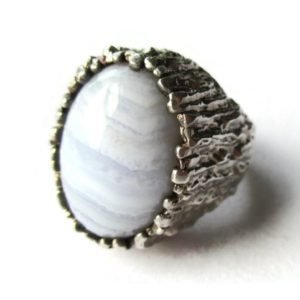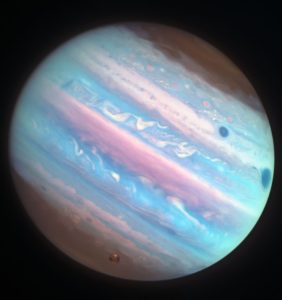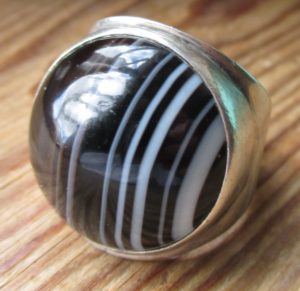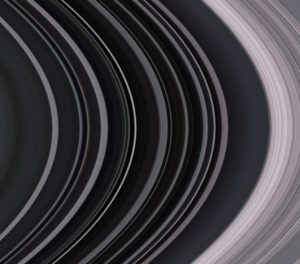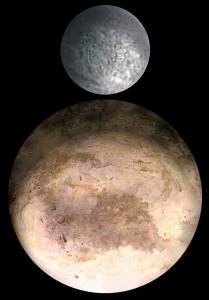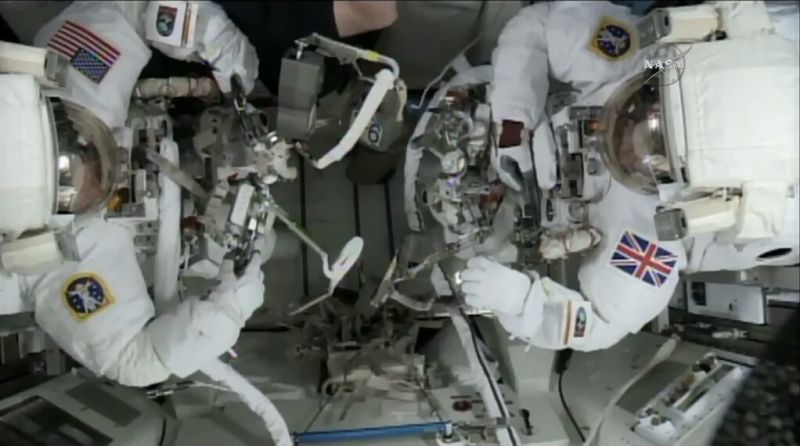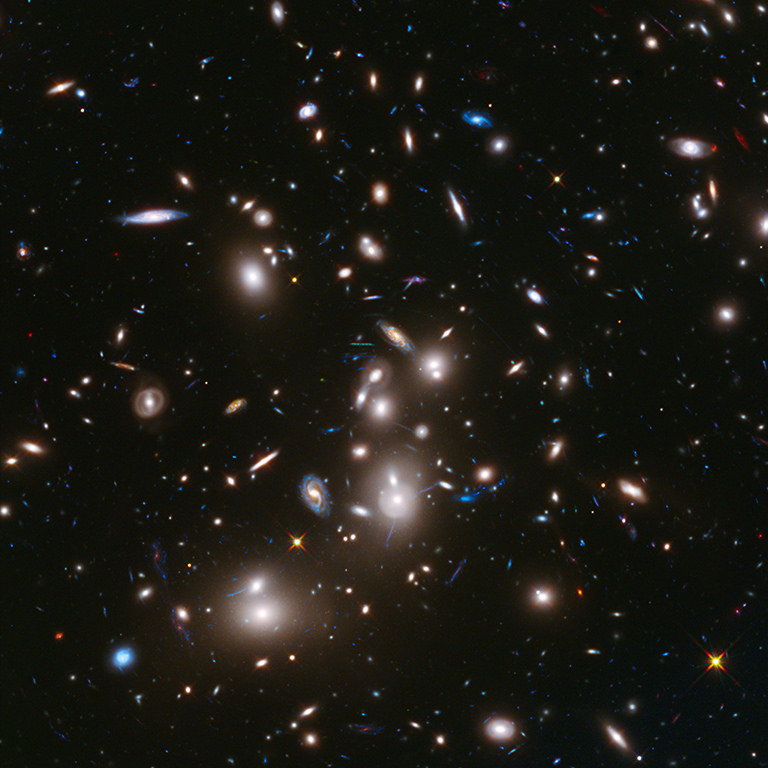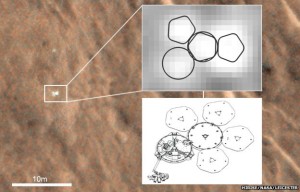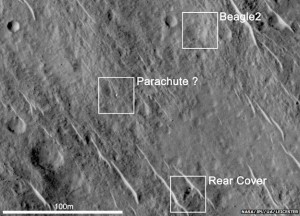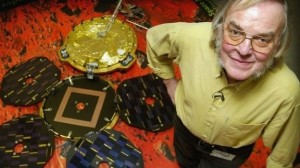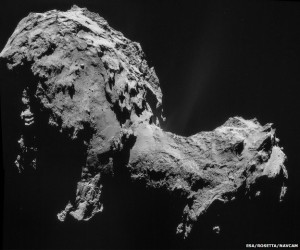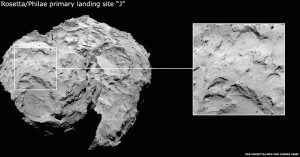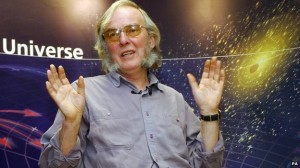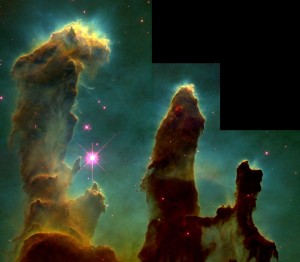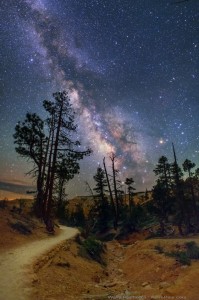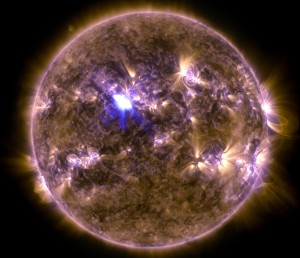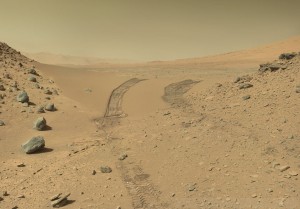I was so happy at the recent fantastic news from the New Horizons probe as it flew past Pluto and showed us what the dwarf planet really looks like (it’s incredible to think that only a fortnight ago, we had a blobby pixelated view; now we can see features 1 km in size). It’s yet another amazing achievement by NASA.
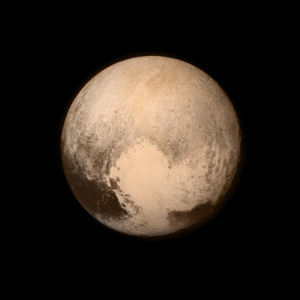
Pluto, photographed by the New Horizons probe on 13 July 2015.
I listened with interest to the 15 July episode of the BBC Radio 4 Inside Science series that was dedicated to the recent Pluto news. Among the items was a small feature on how Pluto got its name. I had heard this story before but it still gives me pause for thought: Pluto was named by an 11-year-old English schoolgirl, Venetia Phair (née Burney) (11 July 1918 – 30 April 2009).
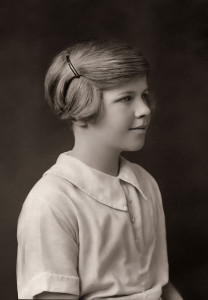
Venetia Burney, aged 11.
So how did an English schoolgirl come to name the planet?
Pluto was discovered on 18 February 1930 by American astronomer Clyde Tombaugh, who was working at the Lowell Observatory in Flagstaff, Arizona. Tombaugh was searching Planet X, a hypothetical planet beyond Neptune, the existence of which had been predicted by Percival Lowell and William Pickering. Pluto’s discovery was made public on 13 March 1930. At the time, Venetia lived in Oxford, with her mother and maternal grandparents. Her grandfather, Falconer Madan (1851 – 1935) had previously been the Librarian of the Bodleian Library of the University of Oxford, and at the time was a noted scholar of the life and works of Lewis Carroll. Over breakfast on 14 March 1930, Madan read out about of the discovery in The Times.
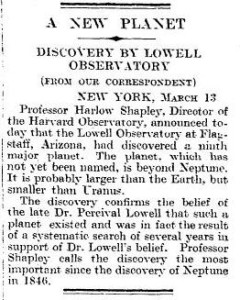
The short piece in The Times, 14 March 1930, that Falconer Madan read out to Venetia Burney at breakfast. This news was tucked away on page 14 of the newspaper.
Here’s a transcript of part of a 2005 BBC interview with Venetia:
My grandfather said, ‘I wonder what they will call it?’ and I said, ‘Why not call it Pluto?’ or words to that effect, and my grandfather, on his way to the Bodleian Library, he dropped a note in at Professor H. H. Turner‘s house. Now he was an ex-Astronomer Royal, so Professor Turner cabled it out to Flagstaff, and I of course thought no more about it and didn’t hear anything about all of this, but the suggestion was taken as a good one, for various reasons, Pluto being a dark planet, god of the Underworld, and various other points, like P L for Pluto, P L for Percival Lowell. And so about three months later I heard that I was responsible for naming it, but I dare say other people thought of it even earlier but didn’t have the backup to cable and suggest it.
Unbeknownst to Burney, on 16 March Turner cabled the suggestion to the Lowell Observatory:
NAMING NEW PLANET PLEASE CONSIDER PLUTO, SUGGESTED BY SMALL GIRL, VEBTIA NURNEY, FOR DARK GLOOMY PLANET. TURNER.
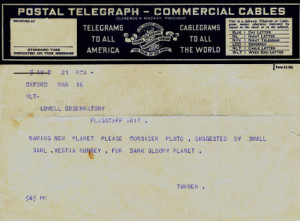
Turner’s cable to the Lowell Observatory. Lowell Observatory Archives. Venetia’s name has somehow become mangled into Vebtia Nurney.
On 24 March the selection was made: every member of the Lowell Observatory was allowed to vote from a shortlist of three names (the other two were Minerva and Cronos), and Pluto won every vote. The announcement of Pluto’s name was made on 1 May 1930, and Venetia’s place in astronomical history was assured. She was invited to watch the launch of New Horizons from Cape Canaveral on 19 January 2006, but had to decline because it was too far for her to travel at her advanced age.
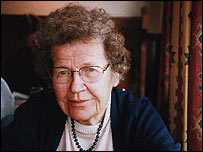
Venetia Phair in 2006.
Venetia was wonderfully modest about the whole matter: on being asked in an interview with NASA whether people in her home town (Epsom) knew of her role in history, she replied ‘ … on the whole, it doesn’t arise in conversation and you don’t just go around telling people that you named Pluto.’ Great British understatement at its finest!
Amazingly, Venetia’s family also made other contributions to the naming of celestial bodies: in 1877 her great-uncle, Falconer’s brother Henry Madan named the two Martian moons Phobos and Deimos.
Venetia has had a few tributes: an asteroid, 6235 Burney, is named after her, as is the American band The Venetia Fair, and perhaps most fittingly, one of the scientific instruments on New Horizons, a dust sensor, bears her name: the Venetia Burney Student Dust Counter (VBSDC).
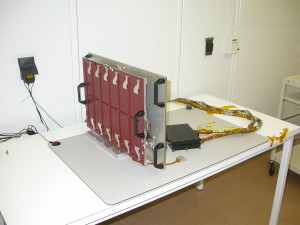
The Venetia Burney Student Dust Counter (VBSDC). Now a very long way away from earth; at one time in July 2015 just 12,500 km from Pluto.
Further information:
NASA’s New Horizons website
18 July 2015 io9 article summarising the New Horizons story so far
13 January 2006 BBC article about Venetia Phair
17 January 2006 NASA interview with Venetia Phair
MP3 of the above NASA interview
